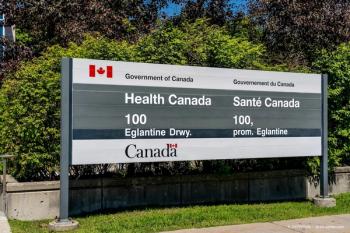
Intravitreal drugs appear promising for treatment of diabetic retinopathy
Off-label use of intravitreal drugs may have a promising future in the treatment of patients with diabetic retinopathy, but currently the dosing of these drugs is suboptimal.
Off-label use of intravitreal drugs may have a promising future in the treatment of patients with diabetic retinopathy, but currently the dosing of these drugs is suboptimal, according to one physician. Controlled clinical trials are lacking and follow-up periods are often too short to reach any definitive conclusions about safety and efficacy, according to George Williams, MD, of the Beaumont Eye Institute, Royal Oak, MI.
Dr. Williams described the use of steroids and anti-vascular endothelial growth factor (VEGF) drugs that can be used as monotherapy, combination therapy, or as adjunctive therapy with laser or vitreous surgery. Steroids down-regulate VEGF production, anti-inflammatory effects, and stabilize cellular membranes, he said.
Triamcinolone acetonide resolves edema following injection, but the side effects include glaucoma and cataract formation. A drug-delivery system (Posurdex, Allergan) allows implantation of dexamethasone with a significant increase in vision at 90 and 180 days after surgery in patients with persistent macular edema. This implant is not associated with the development of glaucoma, but increases in IOP occurred. A fluocinolone acetonide intravitreal implant (Retisert, Bausch & Lomb) has been implanted in 180 patients with diabetic macular edema. Three years after surgery, there was a significant improvement in visual acuity compared with laser, but there was also the associated complication of increased IOP, with 30% of patients requiring filtration surgery, he said.
Anti-VEGF drugs such as pegaptanib sodium (Macugen, OSI/Eyetech/Pfizer) and bevacizumab (Avastin, Genentech) are being used in patients with diabetes. Pegaptanib was shown to induce neovascular regression, increase visual acuity, and decrease retinal edema 3 weeks after injection every 6 weeks. However, the results are complicated by rebound of neovascularization after discontinuation of treatment.
Bevacizumab resulted in a short-term increase in visual acuity and decreased edema at 3 weeks but not later and the results were not as good as with laser. Combination treatment composed of laser and intravitreal drugs may increase the efficacy of and reduce the side effects of photocoagulation, according to Dr. Williams.
"The preliminary experience with dosing of intravitreal drugs for diabetic retinopathy is suboptimal," Dr. Williams said. "Improved drug-delivery systems for steroids and anti-VEGF drugs are needed. Longer follow-up is needed to determine the efficacy and safety of treatment."
Newsletter
Get the essential updates shaping the future of pharma manufacturing and compliance—subscribe today to Pharmaceutical Technology and never miss a breakthrough.















































